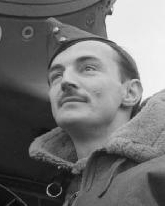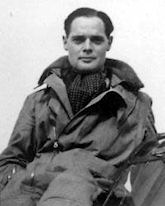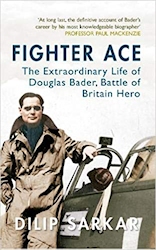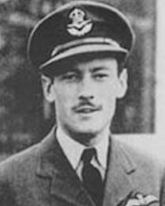
Roland Robert Stanford Tuck
(1916 - 1987)
Date of Birth: 01/07/1916
Nationality: English
Nickname: 'Bob'
Career Rank: Wing Commander
BoB Kills: 9
Total Kills: 27
Roland Robert Stanford Tuck was born in Canterbury, Kent on the 1st July 1916. In 1932 he joined the Merchant Navy as a Sea Cadet before going on to join the Royal Air Force in 1935. After completing his training, he joined 65 Squadron in September 1935 and stayed with them until he was posted to 92 Squadron , based at Croydon, in May 1940 as a Flight Commander.
Leading his first combat patrol on the 23rd of May 1940 over France, Tuck claimed three Messerschmitt Bf 109's shot down and on the 24th of May he shot down two German Bombers. With his kill rate increasing over the next two weeks, Tuck was awarded the Distinguished Flying Cross (DFC) on the 11th of June 1940 which he received from King George VI at RAF Hornchurch on the 28th June 1940.
After the Battle of France his combat success continued in July and August during the Battle of Britain. On the 18th August 1940, whilst attacking a formation of Junkers Ju 88's shooting down one and damaging another, his Spitfire was damaged during the combat and he had to bail out near Tunbridge Wells.
On the 25th of August, Tuck shot down a Dornier Do 17 15 miles off the coast and during the combat his Spitfire was damaged causing the engine to stop. Tuck managed to glide his aircraft back to dry land to make a forced landing.
Tuck was promoted to Squadron Leader on the 11th of September 1940 and posted to 257 Squadron, based at RAF Coltishall. Flying Hawker Hurricanes, he Led the Squadron claiming further victories through September and October with his last kills of the Battle of Britain being two probable Messerschmitt Bf 109's on the 28th October.
On the 25th of October 1940, Tuck was awarded a Bar to his DFC, in January 1941 he was awarded the Distinguished Service Order (DSO) and in March of 1941 he was awarded a second Bar to his DFC.
Intercepting a German Bomber which was heading for Cardiff, Tuck had some terrible bad luck. He fired at the bomber at extreme range in poor light causing the bomber to jettison its bombs to gain speed. The bombs landed in open country side, all but the last stick, which caught a corner of an army training camp killing one soldier ..... his sisterís husband!
Tuck was promoted to Wing Commander in July 1941 and appointed Wing Leader at RAF Duxford. He took a brief trip to America with several other RAF Fighter Command pilots to raise awareness of Britain's war effort and then returned to a posting at RAF Biggin Hill again as Wing Leader. On the 28th January 1942, while on a low-level fighter sweep over Northern France, his Spitfire was hit by enemy ground-based flak near Boulogne forcing him to crash land.
Tuck was captured by the Germans and sent to Stalag Luft III at Zagari where he stayed for two years. After numerous unsuccessful attempts, Tuck finally managed to escape on the 1st of February 1945 as his camp was being evacuated from advancing Russian forces. Tuck joined the Russian troops until he made his way to the British Embassy in Moscow and then boarded a Russian ship making for Southampton, England.
The War now over, on June the 14th 1946 Tuck was awarded a Distinguished Flying Cross from the USAF and he retired from the RAF on the 13th of May 1949 with the rank of Wing Commander.
Following retirement from the RAF, Tuck continued flying as a Test Pilot until eventually settling for a quiet life on his mushroom farm. Tuck also helped as Technical Adviser on the film 'Battle of Britain which was made in 1969.
On the 5th of May 1987, Robert Stanford Tuck died aged 70 years.
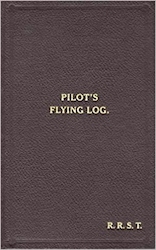
 "Lest we forget"
"Lest we forget"

